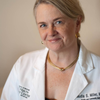A recent Institute of Medicine report on Gulf War illness has unfortunately concluded that veterans have such diverse symptoms and exposures that a single, distinct definition cannot be used to describe their condition. This conclusion fails to account for strong evidence for a new two-step disease mechanism that links environmental exposures with a host of debilitating symptoms similar to those afflicting one-in-four veterans, 23 years after the war.
As a physician and professor of environmental and occupational medicine who studied health concerns of veterans and served on the National Advisory Committee on Gulf War Veterans' Illnesses, I was also initially baffled by the wide variety of symptoms reported by Gulf War returnees. These individuals were exposed to a variety of toxicants, including smoke from oil well fires, pesticides, nerve agents and anti-nerve agent pills, diesel fuel and exhaust, and solvents.
I also served as consultant to the Houston VA's Chief-of-Staff on Persian Gulf Veteran's Illnesses. Veterans were referred to us for difficult-to-diagnose symptoms including the diverse conditions mentioned in the IOM review such as fatigue, pain, headaches, memory and concentration difficulties, skin problems, gastrointestinal disease and mood disturbances.
However, their new-onset chemical, food and drug intolerances were strikingly similar to those that Dr. Nicholas Ashford of MIT and I first discovered among individuals from different countries who shared a major chemical exposure (pesticides, solvents, outgassing from new construction) and subsequently developed symptoms in multiple organ systems and new intolerances to unrelated chemicals, foods, and medications that had never bothered them before.
Among the first 59 Gulf War Veterans I saw, 78 percent reported new-onset chemical intolerances, 40 percent experienced adverse reactions to medications, 78 percent described food intolerances, 66 percent reported that even one can of beer made them sick and 25% became ill after drinking caffeinated beverages. The symptoms experienced by veterans were triggered by so many different everyday exposures, it was impossible to identify the specific sources. This phenomenon is called "masking."
My experience with these veterans provided further evidence for the new two-step mechanism of illness we had termed "Toxicant Induced Loss of Tolerance," or TILT. I brought our findings to the attention of Congress in multiple testimonies. Sadly, veterans continued reporting their symptoms, including mood and cognitive difficulties triggered by exposures to solvents, pesticides, diesel exhaust, etc.
Just as physicians in the Civil War were unaware of the germ theory of disease and could not understand the infections that killed most soldiers, this latest IOM report fails to recognize TILT. Too many policy makers in Washington remain equally unaware of TILT and the critical importance of understanding this new pattern of illness.
Many veterans are displaying signs of TILT. While their original toxic exposures from the war have long since cleared, new intolerances to a wide variety of everyday substances continue to make them ill.
The diagnostic tools for TILT include a screening questionnaire called the Quick
Environmental Exposure and Sensitivity Inventory (QEESI), which provides a comprehensive assessment of symptom severity, severity of intolerances and life impact before and after a major exposure. It is the only test for chemical intolerance that has been validated in several countries and different languages. The QEESI is available online for free at www.qeesi.org.
For those identified as suffering from TILT, the ideal treatment regimen would be admission to an Environmental Medical Unit (EMU). These hospital-based, in-patient facilities are considered the optimal approach for diagnosing and treating people with chemical, food and drug intolerances. Constructed and operated to minimize exposure to airborne chemicals, EMUs would allow patients to return to a "clean" baseline. This "unmasking period" unveils links between exposures and triggers. Once their symptoms have resolved, patients can then be exposed to potential triggers, one at a time, to determine what is causing their symptoms.
Regrettably, there are no EMUs in the United States today, despite growing recognition that environmental exposures are implicated in a wide variety of illnesses, including Gulf War illness and a number of related conditions mentioned in the IOM report, including fibromyalgia and chronic fatigue. For this reason, I urged Congress, the VA and military officials to fund EMUs to help individuals that so badly need them. While Congress appropriated $1.2 million for EMU studies, funds were ultimately spent on unrelated research, principally animal studies.
This is a problem that not only affects Gulf War veterans, but millions of Americans who suffer from chemical intolerance. I believe these illnesses are connected by the same underlying two-step disease dynamic: TILT -- initiated by a single major or repeated low-level exposures. Congress, the VA and the medical establishment must recognize the importance of this new mechanism of disease and respond accordingly with effective diagnosis and treatment.
EMUs and the QEESI test are perhaps the most important, cost-effective tools we have to finally understand and resolve the long, mysterious suffering that so many war veterans continue to endure. They deserve nothing less.
________________
Claudia S. Miller, M.D., M.S., is a tenured Professor in Environmental and Occupational Medicine and Vice Chair of the Department of Family and Community Medicine of the University of Texas Health Science Center at San Antonio (UTHSCSA).
